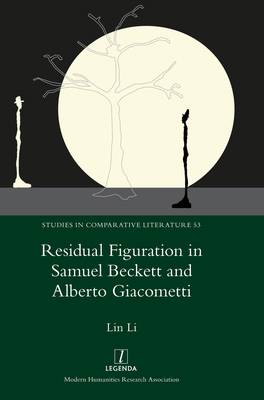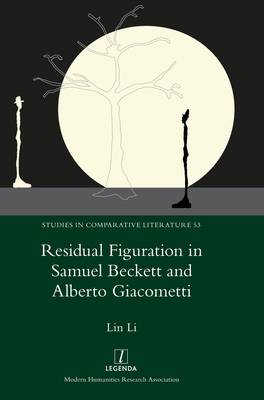
- Afhalen na 1 uur in een winkel met voorraad
- Gratis thuislevering in België vanaf € 30
- Ruim aanbod met 7 miljoen producten
- Afhalen na 1 uur in een winkel met voorraad
- Gratis thuislevering in België vanaf € 30
- Ruim aanbod met 7 miljoen producten
Zoeken
Omschrijving
In 1945, Swiss sculptor Alberto Giacometti (1901-66) brought back to Paris six matchboxes filled with the work of his war years: minute figurines that crumbled upon a single touch. Around this time, Irish playwright Samuel Beckett (1906-89) began writing plays, first Eleutheria and then Waiting for Godot. When they came together in 1961 to collaborate on a re-staging of Godot, both had turned their attention to different types of figures: Giacometti to lanky, attenuated figures that seem to erode into their environment, and Beckett to increasingly disembodied characters, such as Henry and Ada in Embers.
What can we make of this turn in depicting figures that seem to make and unmake themselves in our processes of perceiving them? Through a close examination of Beckett's dramatic works and Giacometti's art, Lin Li traces the development of this peculiar type of figuration and uncovers its implications on personhood, rhetoric and inter-medial reading.
Lin Li is research associate at the University of Antwerp.
What can we make of this turn in depicting figures that seem to make and unmake themselves in our processes of perceiving them? Through a close examination of Beckett's dramatic works and Giacometti's art, Lin Li traces the development of this peculiar type of figuration and uncovers its implications on personhood, rhetoric and inter-medial reading.
Lin Li is research associate at the University of Antwerp.
Specificaties
Betrokkenen
- Auteur(s):
- Uitgeverij:
Inhoud
- Aantal bladzijden:
- 128
- Taal:
- Engels
- Reeks:
- Reeksnummer:
- nr. 53
Eigenschappen
- Productcode (EAN):
- 9781781886625
- Verschijningsdatum:
- 25/04/2022
- Uitvoering:
- Hardcover
- Formaat:
- Genaaid
- Afmetingen:
- 170 mm x 244 mm
- Gewicht:
- 408 g

Alleen bij Standaard Boekhandel
+ 237 punten op je klantenkaart van Standaard Boekhandel
Beoordelingen
We publiceren alleen reviews die voldoen aan de voorwaarden voor reviews. Bekijk onze voorwaarden voor reviews.











